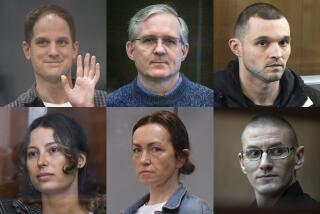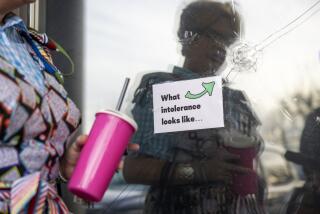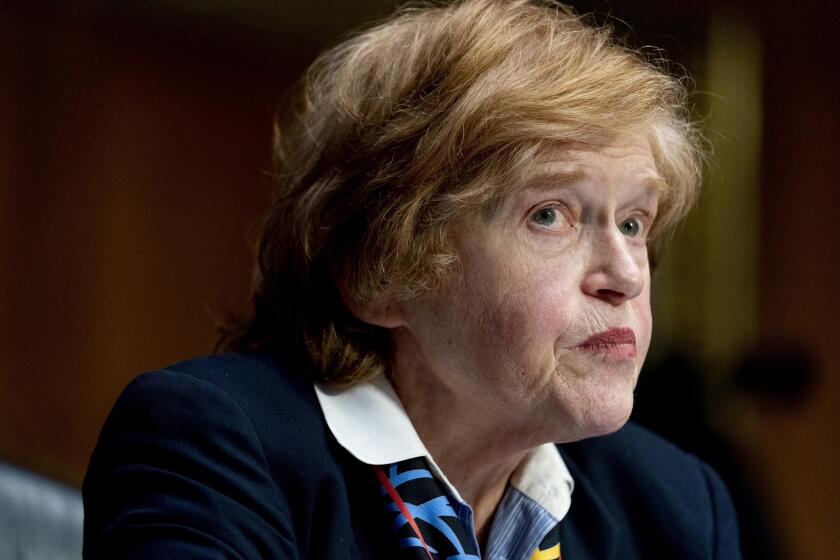New Input About Model for Indian-Head Penny
The Indian-head cent is one of America’s most popular coins. It was issued from 1859 to 1909, and the design of an Indian princess wearing a ceremonial bonnet captured the public’s imagination. The coin was created by James B. Longacre, but a slight mystery persists about the coin’s model.
Most authorities agree that the model is Sarah Longacre, the designer’s daughter. Still, some questions remain unanswered. I don’t recall having written that the model was not Sarah Longacre, but if ever there was any doubt, a Los Angeles resident wants to set the record straight.
“I enjoy reading your column,” Meg Quinn writes, “but must clarify some errors about the Indian-head penny, because the person portrayed is my great-great grandmother. James Barton Longacre was the chief engraver of the U. S. Mint in Philadelphia and was competing in 1835 for a design for the planned copper cent. Knowing that several Indians and their chief (I understand it was Sitting Bull but am not certain) were to be shown the Mint as part of their visit to the Great White Chief in Washington, his (Longacre’s) daughter, Sarah, begged to be brought to the office to see the exotic Indians.
“The old chief was intrigued by the 12-year-old with her flaming red hair, removed his war bonnet and placed it on her head. Her father did a quick sketch of the moment to show his wife. Later, pressed for an entry for the contest, he refined the profile of his Pennsylvania Dutch daughter wearing the Indian headdress and won by one vote. Sarah was much teased in the city for a time. The initial, which can be found in early mintings at the end of her jaw line, refers to her name, Sarah Longacre. Please correct your column as I fear your misinformation will be quoted as the true story.”
I’d like to thank Meg Quinn for supplying her version of the story of the Longacre-designed cent. It agrees essentially with what many experts have written about this design. Certain representations are questionable, such as the initial L, which stands for the designer and is located on the bonnet ribbon.
Norman M. Davis in “The Complete Book of United States Coin Collecting” writes: “It has been called illogical that Longacre could have shown a Greek goddess wearing an American Indian headdress. But if you look at the figure as Miss Liberty, the feathered bonnet is perfectly appropriate. It’s sometimes said that the source of the figure was the Venus Acroupi, a Greek statue in the Vatican Museum. It also has been suggested--and this is important--that Sarah posed but the portrait isn’t meant to show her. . . . You can see that the face has a smoothness and softness that don’t fit an Indian, but a maturity and air of confidence that don’t fit a young girl--yet these qualities do fit Miss Liberty. One thing’s certain: Whoever is on it, the Indian Head cent is one of our most popular coins.”
The fact that Sarah Longacre served as a model on the Indian-head cent, I believe, is certainly not just family legend. But some curious loose ends remain to be clarified.
Question: I have a sparkling new Indian-head penny dated 1907. Is it worth anything?--P.A.
Answer: If your coin is indeed “new,” as you describe it, it could be worth from $25 to $150, depending upon condition.
Q: I have a 1694 William and Mary half crown from Great Britain. However, it doesn’t have the crowned shields on the reverse. It has an “Irish harp” with 1694 above it and this inscription around the rim: Mag. Br. Fr. Et. H.B. Rex. Et. Regina. Can you give me any information on my coin? Everything I read about it states that the coin has the crowned shields on the reverse.--E.R.B.
A: Your coin apparently is from a Maundy set. British monarchs bestowed these as gifts to people for their service to the community. Money played no part in the ritual back in the 11th Century, but eventually special coins were struck, and these sets became known as Maundy money. The first full, dated sets of four coins appeared in 1670. Your coin from the set is hard to price separately, but a complete set is worth $100 and up, depending upon condition.
Q: I have a copper medallion about the size of a silver dollar, apparently from the 1904 Louisiana Purchase Exposition (known as the World’s Fair) in St. Louis. The reverse says St. Louis 1904 America Welcomes the World. Could you give me an idea of what it is worth?--J.R.
A: Your medallion is worth about $10 to $20.
Q: I would appreciate very much if you evaluate the following coins for me: Edward VII D.C. BRITT OMN REX F.D. IND IHP (gold) dated 1902, 1903, 1905, 1906, 1907, 1908, 1909, 1910, 1914, 1915, 1917, 1918, 1927, 1928; Patrona REGNI HUNGARIE 1732, on the back CAROL VI (gold); 50 pesos 375 ORO PURO Estados Unidos Mexicano dated 1821, 1945, 1946.--S.P.
A: Your British gold pieces are known as sovereigns and are essentially bullion pieces worth about $75 each; your Hungarian coin is worth $295, and the Mexican 50 pesos are $375 each.
Coin Calendar
Friday, Saturday and Sunday--Sincon XVI, the 16th annual convention and coin show of Society for International Numismatics, will be held this weekend at the Airport Park Hotel, 600 Avenue of Champions, Inglewood. Hours are Friday noon-8 p.m., Saturday 10 a.m.-8 p.m. and Sunday 10 a.m.-5 p.m. About 85 dealers are expected to participate. Highlighting the show will be an auction conducted by Joel L. Malter. The three-day sale will feature the Frederick H. Rindge Collection of ancient and medieval coins, American Colonial coins and paper money and foreign medals. Rindge was a pioneer Southlander whose land holdings included most of Malibu. Catalogues are obtainable for $6 from Malter at P. O. Box 777, Encino 91316; telephone (818) 784-2181.
Coin News
A souvenir card featuring a replica of the back of a $50 national currency note (pictured) is being issued by the Bureau of Engraving and Printing in conjunction with a coin show in El Paso in April. The card will cost $4 by mail; some hand-canceled cards with the new 22-cent “flag over Capitol” stamp will be $4.50. To order, print clearly on 8x11-inch paper and request No. 906 for mint cards, No. 907 for hand-canceled cards. Make checks payable to BEP (no cash), and send to El Paso Card, Mail Order Sales, Room 602-11A, Bureau of Engraving and Printing, Washington, D.C. 20228. Do not order before April 7.
A three-session course, “Numismatics: There’s Gold in Them There Coins,” will be conducted April 11, 18 and 25 by Sol Taylor at the Learning Network, 520 S. Sepulveda Blvd. The fee is $73 for the 7:30-10 p.m. classes. To enroll, contact the center at (213) 476-1267.
Don Alpert cannot answer mail personally but will respond to numismatic questions of general interest in this column. Do not telephone. Write to Your Coins, You section, The Times, Times Mirror Square, Los Angeles 90053.
More to Read
Sign up for Essential California
The most important California stories and recommendations in your inbox every morning.
You may occasionally receive promotional content from the Los Angeles Times.






